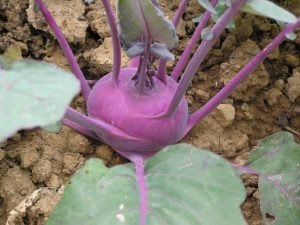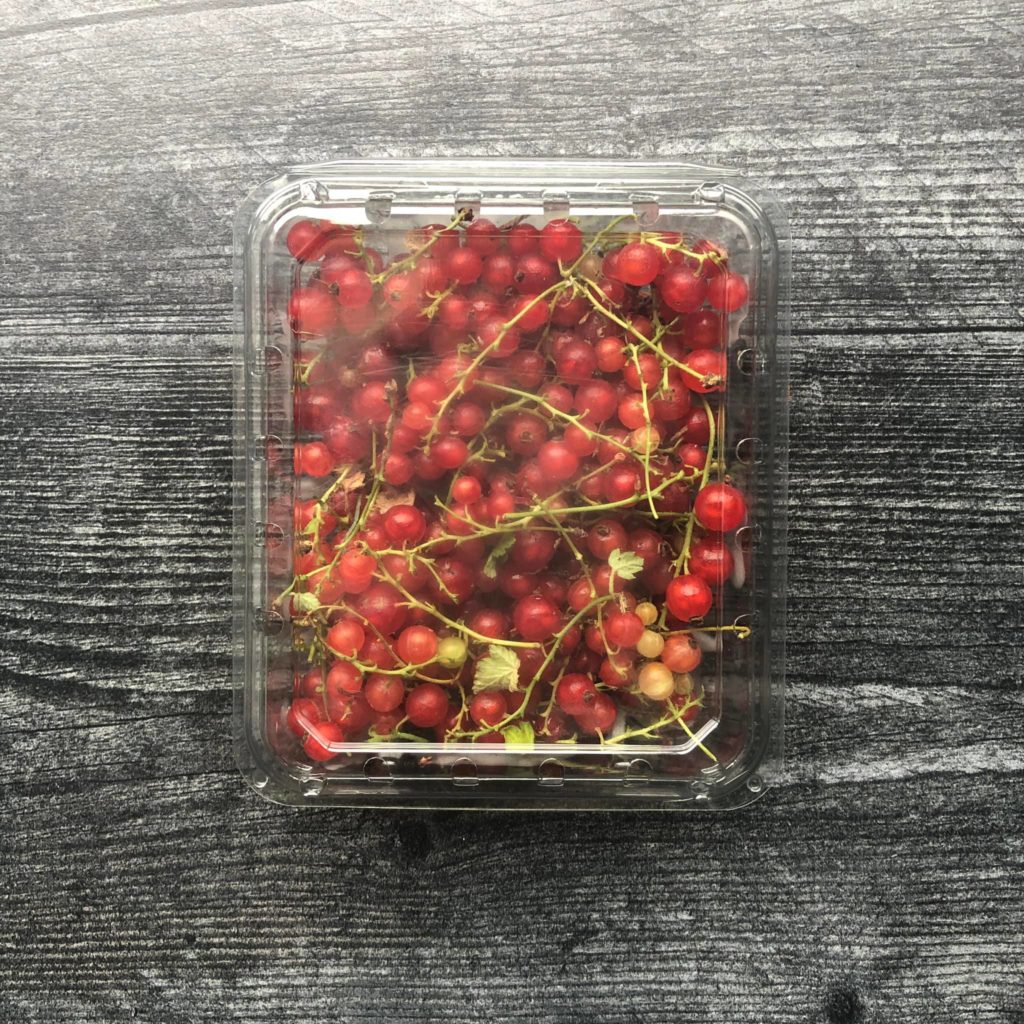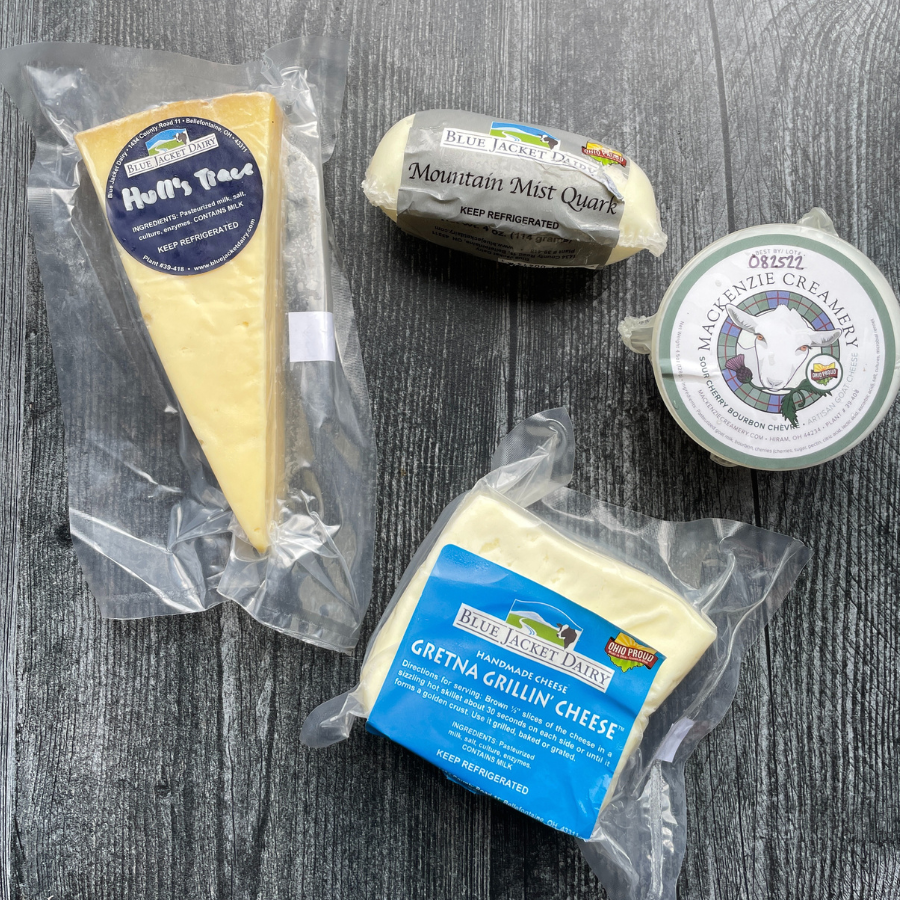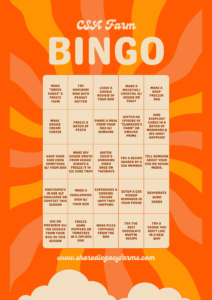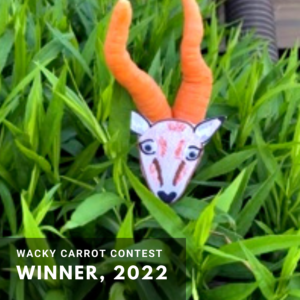Shared Legacy Farms Week 3 Newsletter, June 26, 2022
Farm Newsletter Week 3
June 26 – July 2, 2022 | “A” Week
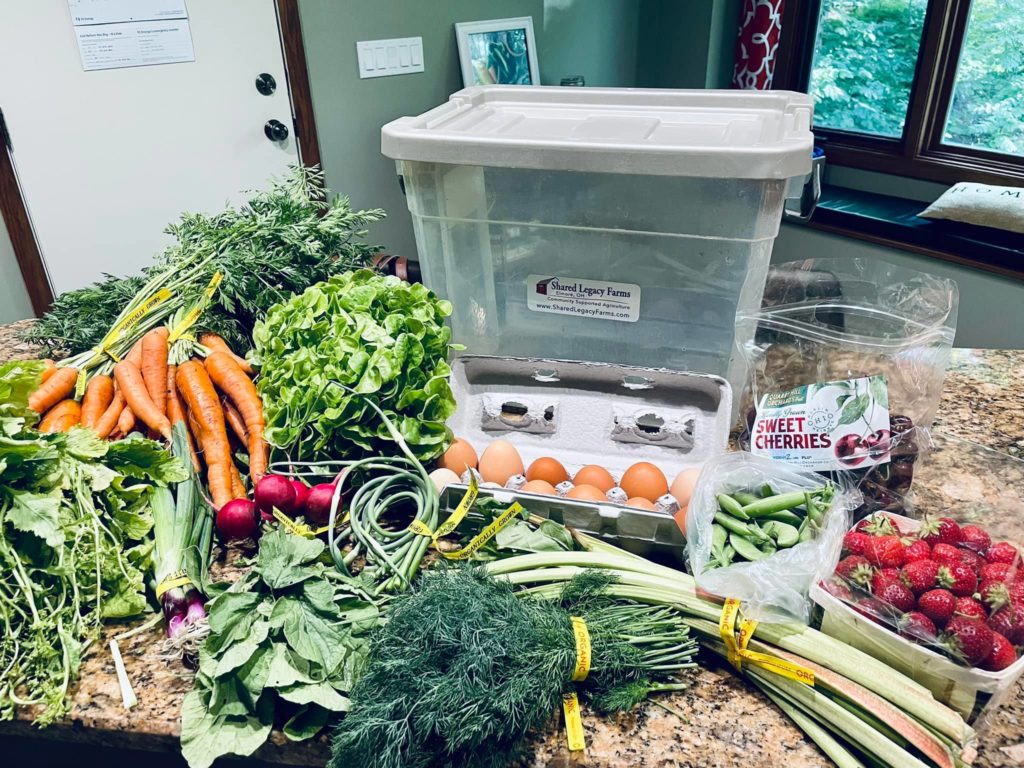
Last week’s CSA share.
What’s in the Box this Week?
BOK CHOY ~ Bok choy, which may be written as bok choi, bok choy, or pac choi, is a traditional stir-fry vegetable from China. Choy grows in elongated, upright heads of dark green leaves with large, white stems.The leaves can be cooked and eaten like spinach, while the crisp stems can be used like celery or asparagus. Store wrapped loosely in plastic bag (or a Green bag) in the refrigerator. To prep: Wash and removed any damaged yellowing leaves. Cut off the root tip — about an inch worth. If the stems are thick, cut the leaves from the stems and cook them separately a few minutes before you add the leaves. To freeze: Cut the stems from the leaves and chop to desired size. Store those separately. Cut the leaves into ribbons or squares or keep whole. Bring salted pot of water to a boil. Boil the leaves in boiling pot of water for 90 seconds. Douse in ice water to stop the cooking process. Drain the leaves and squeeze out moisture. Place in ZiplocK freezer bags, removing as much air as possible. Put in freezer. Blanch the stems separately for 2 minutes. Douse in ice water and drain before packing into separate Ziplocks.
GARLIC SCAPES ~ The scape is the flowering part of the garlic plant that emerges in June. We cut the scape before it blooms to redirect energy back to growing the bulb. It has a milder garlic taste and can be substituted for garlic. Store scapes unwashed in a loosely wrapped plastic bag in the refrigerator for up to 2 weeks. To prep: Chop off the very tip and woody parts of the stem. Then mince finely and use in place of garlic. To use: Garlic scapes can be chopped or diced raw into green or pasta salads, sautéed in place of bulb garlic, sprinkled onto pizza, eaten raw, or used anywhere garlic flavor is desired. They’re also great grilled. To freeze: Scapes can be chopped and flash frozen in Ziplock bags.
KALE ~ Kale is a member of the brassica family. Kale comes in blue-green, reddish green, and red varieties and may have flat or curly leaves. All types of kale have thick stems. It has a mild cabbage flavor when cooked. To store: Place kale unwashed, wrapped in a sealed plastic bag in the crisper drawer of the refrigerator. Best used very fresh, but may last for a week. To prep: Wash leaves in basin of lukewarm water to remove grit. If your greens have thick stems, you must remove them. Fold each leaf in half and slice out the stem. Then stack the leaves up and slice them diagonally into 1-inch-wide strips. To use: Saute in olive oil. Use in soups, spaghetti sauce, pesto, quiche, or kale chips. You can also eat the stems. To freeze: Blanch washed greens for 2-3 minutes. Rinse in cold ice water to stop the cooking process, drain, and pack into airtight containers. Stems can also be frozen.
PURPLE KOHLRABI ~This plant was developed by crossing a cabbage with a turnip! The edible part of the plant is an enlarged section of the stem that develops just above the ground. It has a crisp interior like a potato. Store kohlrabi globe and leaves separately. The bulb will last for 2 weeks refrigerated in a plastic bag. Wrap leaves and stalks in a plastic bag and keep in the crisper drawer of the refrigerator. To prep: Rinse under cold running water just before use. Cut the outer skin off with a knife. Trim off the remains of the stalks and root. Grate, slice, or chop as desired. To cook: Cut raw kohlrabi bulb into sticks for a refreshing addition to a raw vegetable tray or grate it for salads. Try raw kohlrabi smeared with peanut butter. Lightly boil, steam or bake it, or add it to stews and stir-fries. Young kohlrabi leaves can be used in recipes calling for greens. To freeze: Cut into cubes or slices and blanch for 3-4 minutes. Place into ice water bath to stop the cooking. Drain and dry. Place in Ziplock freezer bag.
GREEN HEAD LETTUCE (1) ~ Store unwashed lettuce in a Debbie Meyer Green bag or Tupperware FridgeSmart container in the refrigerator. To store lettuce that you have already washed and dried with a spinner, place back in a plastic bag with a dry paper towel in the bag, and place the package in the vegetable crisper bin. Use within 4 days. To prep: Slice the head at its base with a knife and let the leaves fall open. Discard any damaged or leathery outer leaves and tear large leaves into bite-size pieces. Wash leaves in a basin of cold water. Dry in a salad spinner. To freeze: Not recommended.
GREEN ROMAINE HEAD LETTUCE (1) — Same instructions as above for the head lettuce.
YELLOW/WHITE CARROT MIX (with tops) ~ SAVE THE CARROT TOPS! You can make really cool stuff with them… To store, first take the tops off your carrots and put them into a plastic bag in the fridge. The roots should be stored separately in the crisper in a plastic bag. If they get soft, just put them in some water to crisp them up again. Eat within 3 weeks. Don’t throw the carrot greens away! Use them to make carrot top pesto! Or dehydrate them on your counter and add them as a parsley-type herb to future dishes. Or throw them into a “veggie scrap bag” in your freezer (with other things like the tops of celery, onion skins, carrot ends). When the bag gets full, use it to create your own DIY veggie broth (which you can then freeze into ice cubes for later use!) Not sure how to make DIY broth?… grab our guide here.
BUNCHED CILANTRO ~ Cilantro looks like parsley, but has a strong soapy smell and flavor. It is used in ethnic cuisine — Asian, Indian, and Mexican (especially salsa). Since it doesn’t stand up to heat, it is usually added to a dish right before serving. This plant grows in cool weather conditions, so you won’t see it in the heat of the summer months. For short-term storage, stand upright in a container with an inch of water. Then cover the herbs loosely with a plastic bag and refrigerate for up to 2 weeks. To prep: Chop the stem and leaves with a butcher knife. The stems can be eaten too.
WEEK #3 ADD-ON SHARES: We are Week “A”
Odd-numbered weeks of our CSA season (week 1,3,5) are called “A” weeks. And even-numbered weeks (week 2,4,6) are called “B” weeks. If you have any kind of non-veggie, bi-weekly share, you have been assigned to either “A” or “B” week for the season. If you get a cheese share, it always comes on Week “A.”
WEEK 3 FRUIT SHARE:
RED CURRANTS (HALF PINT) certified organic ~ (from Wayward Seed Farm, Fremont) To store: Store in the fridge. Do not wash until you eat them. These will last about 3-4 days. To prep: Rinse and remove stems. To freeze: Remove stems and lay flat inside a Ziploc freezer baggie. Pop into freezer.
SWEET CHERRIES ~ (from Quarry Hill Orchard, Berlin Heights) Sweet cherries will be either a dark red color, or a red/yellow blush color (the Rainier cherry) and are best for eating out of hand. Sour cherries are usually a bit soft, and are best used in baking pies or cobblers. Store cherries in your refrigerator in a plastic, perforated bag in the crisper drawer for up to a week. To prep: Remove stem. Pit the cherries after washing. To freeze: Choose firm, ripe cherries. Pit cherries first (although you don’t have to). Flash freeze on a sheet pan. Then pop into a Ziplock bag. Freeze for up to a year.
CHEESE SAMPLER:
Gretna Grillin ~ (Blue Jacket Dairy) Gretna is a halloumi-style cheese – semi-soft, salty, buttery, non-melting cheese made from pasteurized whole cow’s milk. When browned in a sizzling hot skillet, it forms a beautiful golden crust.
Mountain Mist Quart ~ (Blue Jacket Dairy) Quark is a German word for “curd.” Blue Jacket quark is a mild, creamy, and versatile cheese made from pasteurized whole cow’s milk. Often used to make German cheesecake or other fine pastries.
Hulls Trace ~ (Blue Jacket Dairy) semi-hard aged cheddar made from cow’s milk.
Sour cherry bourbon chevre ~ MacKenzie Creamery Blow your mind good goat cheese flavor
Ice Cream Flavor of the Week:
VANILLA BEAN from Knueven Creamery. Note: be sure to stop and pick up your ice cream from the Knueven milk truck at your pickup site! They will be located either right before or after your veggie pickup. Your farmers will not be passing this out in their delivery line.
Coffee Flavor of the Week:
Maddie & Bella Coffee Company ~ Brazil Bob-o-Link, complex/creamy/ rich chocolate tones.
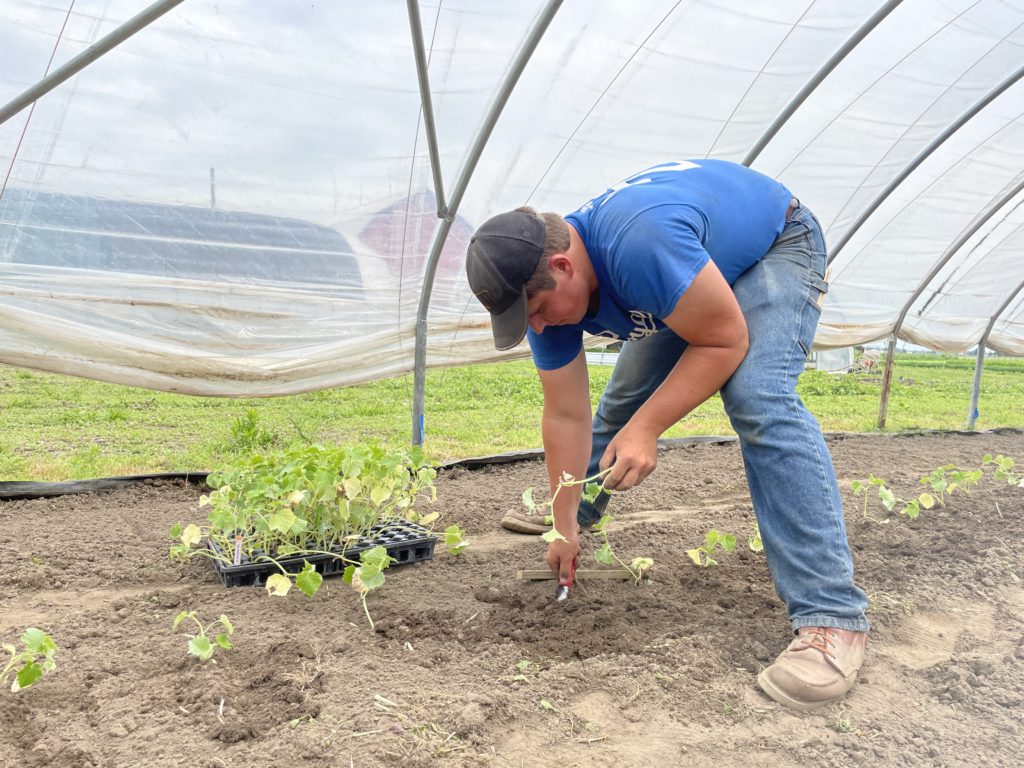
Noah transplants cucumbers into the high tunnel this week.
Seeding with a Vacuum?
I thought it would be fun to show you one of the ways that we speed up the process of seeding flats in the greenhouse.
But let me back up… “seeding flats.” What’s that all about? Well although there are a few veggies that we “directly seed” into the field (like sweet corn, carrots, or cut lettuce), most of the time we start the seedling in a greenhouse tray and tend it until it’s a little bit bigger. Then we “transplant” these seedlings into the field with a mechanical transplanter (or by hand) so they can continue to reach mature size.
Seeding those greenhouse flats takes a lot of time — especially if you’re doing each cell by hand. And it’s tedious work. Your neck starts to cramp up. You start to go cross-eyed. And you start sweating bullets in the greenhouse.
We quickly upgraded to something called a “vacuum seeder.” These tools cost $500, and we should have bought it 5 years sooner, because the time it saves is… well… incredible.
Rather than try to explain how it works, it’s easier to show you. So watch this video I took of Noah this week, seeding kraut cabbage for the fall.
The vacuum sucks the seeds towards the holes in the plate. These holes line up perfectly with our greenhouse flat. So when Noah flips the plate upside down to match it with the holes, the seeds drop right in once he turns off the vacuum.
They make different size plates for the vacuum seeder, depending on the size of the seed. (Very small seed needs smaller holes).
Now seeding in the greenhouse is fun!! Who thought vacuuming could be exciting?
CSA Scholarship Report, 2022
Every year, we ask our members to make an optional contribution to our CSA scholarship fund. We use these funds at our discretion to help families in our CSA community who could use a little help footing the CSA investment. I want to thank all of you who made a contribution to our PayPal fund, or via check or cash. I wanted to give a brief report on how the funds were used. To protect the privacy of our families who received aid, I will simply keep names anonymous:
We disbursed $1420 in aid to 6 different families.
- Family A: $440 award
- Family B: $40 award
- Family C: $100 award
- Family D: $440 award
- Family E: $100 award
- Family F: $300 award
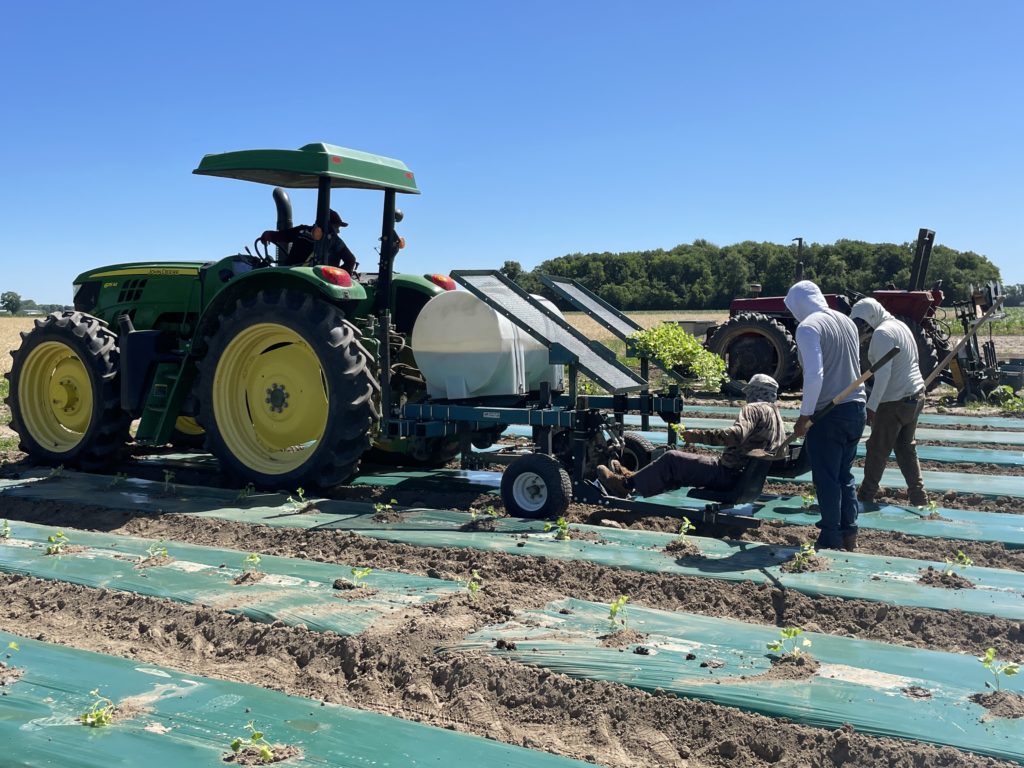
Polo, Jose, Pedro, and Jesus planted another batch of melons for our fruit share next door at David Bench Farms.
FARMER KURT’S FIELD NOTES
This weekend we hosted Chef Nixon from Element 112 at the farm for our annual “Private Chef Tasting” dinner. We started this a few years ago, when Nixon was looking for a “change in view” and a place to be creative and have some fun with his cooking. It’s a small affair — only 14 guests. But we love doing it, because it gives us a chance to get to know a handful of our customers really well. This year’s dinner was awesome as usual. And I want to thank the Rodgers, the Stahls, the Koepflers, the Sawvels, the Musterics, Jose Carlos, Lupita, and Bob Seaney for coming. You’ll see a few pictures from that event in this newsletter.
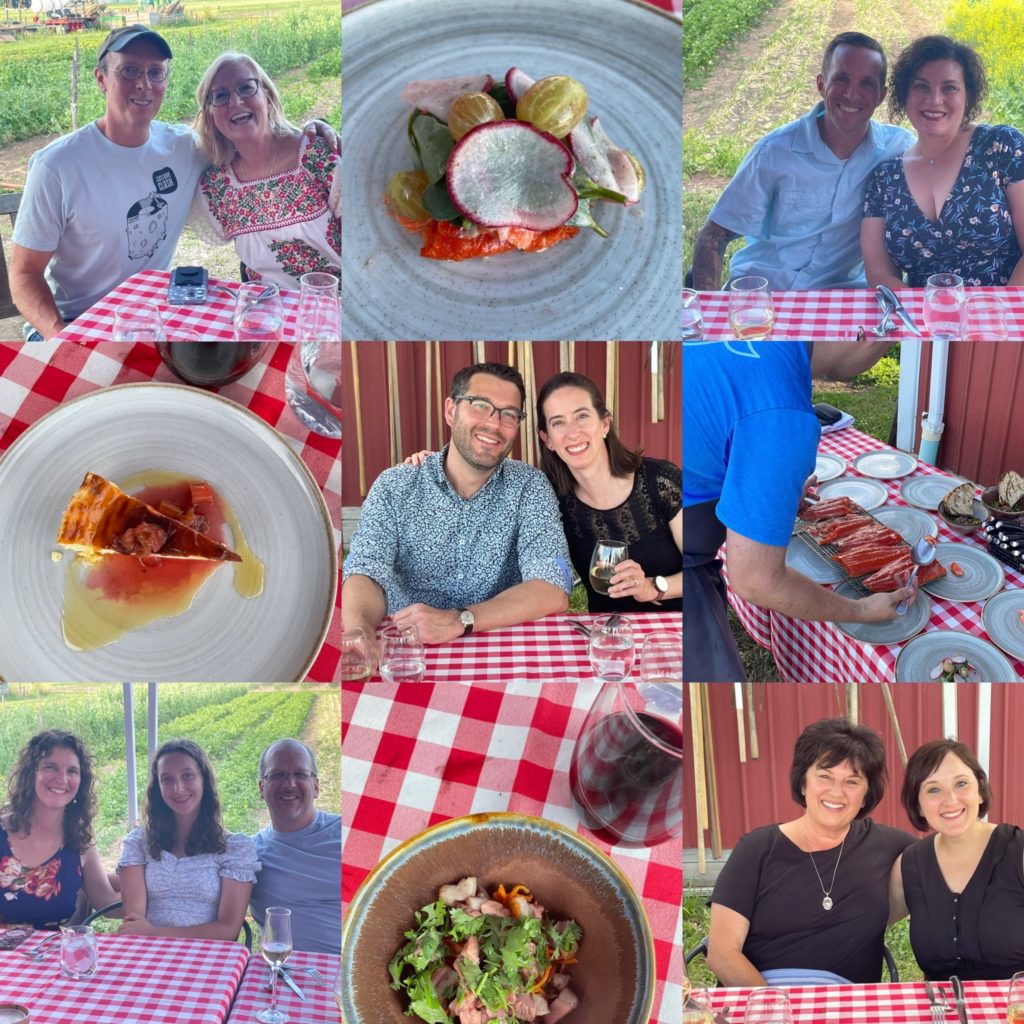
Images of our farm dinner this weekend with Chef Nixon of Element 112
This week, I got the irrigation reel out, because it’s starting to get dry. This is a giant hose reel that winds up the irrigation firehose and connects to a water gun that sprays the crops (in this case, sweet corn). The hose connects to the main lines that draw from the farm’s underground well. We set a timer so that the reel slowly pulls in the water gun sprayer towards the reel. When it gets to a certain point, it shuts off.
We planted a succession crop of melons mid-week as well, so we can supply you with a fruit share mid-summer. Speaking of water, I had my boys then had to drive a tractor/water tanker over the new melon transplants later that night, and Josiah aimed a water hose over each transplant as they drove over the beds, giving each plant a douse of water. Until I get the water lines set up, that’s what we have to do for the water sensitive plants.
We harvested our first load of gooseberries, and they look great! This small group of bushes we put in a few years ago is really paying off now. I’ll put them into the online store, and I hope you have some fun ideas for what to do with them. Noah and John seeded kraut cabbage for this fall/winter in the greenhouse. Hard to believe I’m seeding things for the end of the season already.
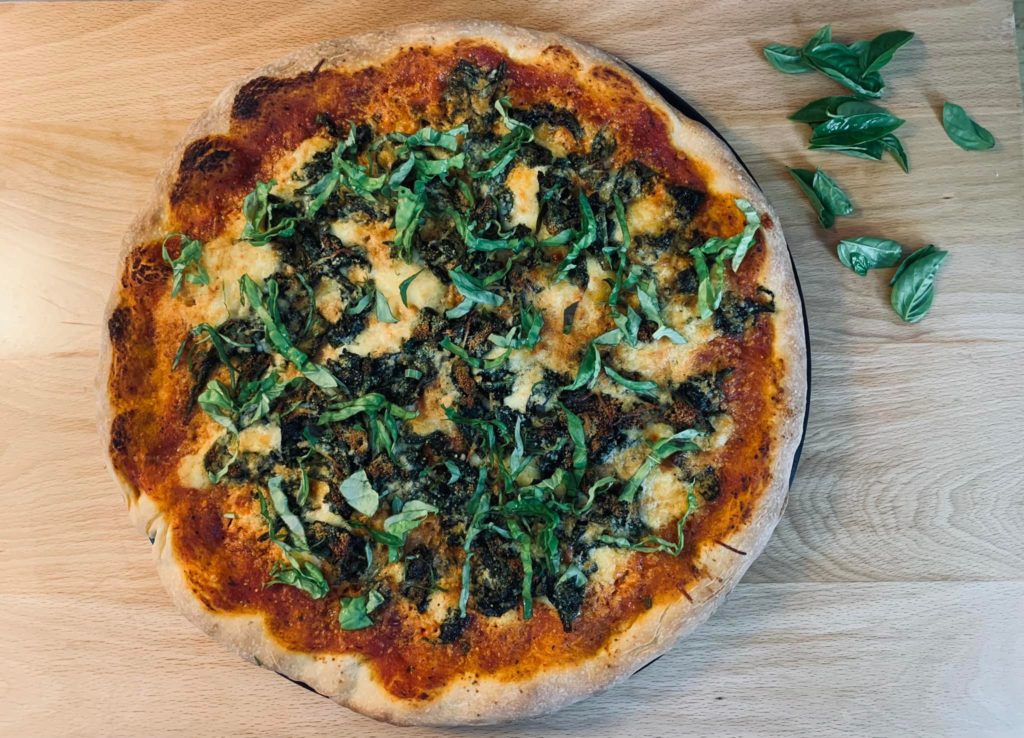
This pizza from Tara Baranowski was inspired by another post shared by Mary Montgomery in our Facebook group.
The guys planted more cucumbers in the old lettuce high tunnel. I cleared out all those salad greens plants to make room for them. We’ll see how the lettuce does moving into the hot months. They usually have a hard time in the heat, and I can’t get them to stay sweet. My strategy is to water the heck out of them to keep them cool. We’ll see if that works. The zucchini and summer squash is looking great! For now, I’m staying on top of weeds, too… the guys hoed the sweet potatoes, peppers, and beets last week. Aside from that, we are now moving into the regular rhythm of CSA harvesting on Mondays and Wednesdays, but my guys have been doing great at keeping up.
I could use a day off. I haven’t been good about making personal time this week, and I’m starting to feel it. I also need to just deal with that darn paperwork that piles up. You’d be surprised how much paper-pushing goes on in a farm business.
~Your Farmer, Kurt
WEEK 3 ANNOUNCEMENTS
- Our NEXT CONTEST!! Play SLFarms Bingo with us this month!From June 26 – July 20, you are encouraged to compete in our SLF Bingo Board competition. In your newsletter this week, you’ll receive a PDF file of the Bingo Board.Fill in as many of them as you can over the next 3 weeks! Some of them are EASY (you may already have done them), and some are little more challenging.Once you complete 20 of the 25 spots, post a picture of your Bingo board in our Facebook group with the hashtag #CSABingo2022. I’ll choose 3 random winners from this pool of submitted boards on July 21st, and you’ll receive a $50 gift package of flavored olive oils from the OliveScene.com.
- Congratulations to our Wacky Carrot contest winner Tiffany Gradel, for her hilarious video submission of a goat carrot being eaten by a leopard in a bush. You win a free pint of Knueven ice cream this week!
Tiffany Gradel wins the Wacky Carrot Contest with her video submission of a goat being eaten by a leopard.
- Watch our weekly Live Unboxing video this Tuesday around 8 PM inside the private Facebook group. Cadie Jardin, our CSA coach and dietitian, will show you what’s in the box, share storage tips and ideas for how to use your product. You can find the Facebook group at this link. If you aren’t on Facebook, we download the unboxing video into the digital Academy library (which you all get free access to). Reach out to me if you can’t figure out how to get into the Academy. (www.sharedlegacyfarms.com/academy) — note: you should NOT pay for a membership to the Academy. You get in for free with your membership!
- You can order additional items from the Shared Legacy Farms online store. Our store link is super easy to remember: www.sharedlegacyfarms.com/store. Just be sure to select the right pickup site that coincides with your pickup location. If the pickup option is greyed out or not available, it means you missed the window to order. You need to place your order 36 hours before your site. We harvest the product on Monday and Wednesday mornings — early. This week, the store will have: red lettuce, dill, snap peas, snow peas, orange carrots, gooseberries, purple scallions, white scallions, dinosaur kale, kohlrabi (two colors), sweet cherries (2#), black currants, and red currants (1/2 pint), along with local maple syrup, rye flour, and extra eggs from Jed/Josiah.
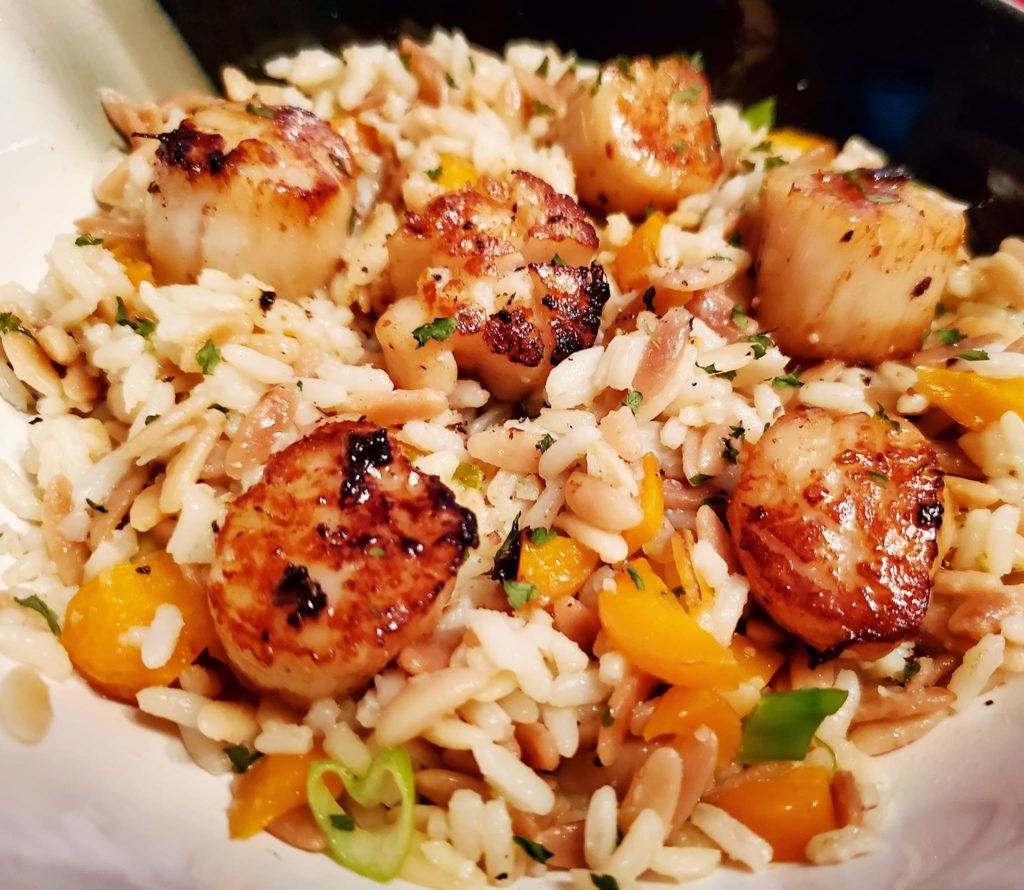
Danielle Kuhl shared this simple rice pilaf with scallops, peppers, and scallions.
WEEK 3 CSA RECIPES
Members: You can download these recipes as a PDF here. These recipes are designed to inspire you to use your box this week! Please check inside our private Facebook group to find your fellow members sharing ideas for what to make with their box! Share a photo and you might be featured in next week’s newsletter!
Garlic Scape Dressing
Homemade Ranch Dressing
Cilantro Dressing
Avocado Kale Mango Salad
Grilled Garlic Scapes with Sea Salt
Kohlrabi Slaw
Oven Roasted Carrots and Kale
Roasted Potato and Kohlrabi Salad
Ginger Garlic Soup with Bok Choy
Microwave Kale Chips
Kale, Potato and Carrot Curry
Boy Choy Salad with Sesame Soy Sauce
Fresh Red Currant Yogurt Cakes
Red Currant Clafoutis
Cherry Basil Lemonade Spritzers

